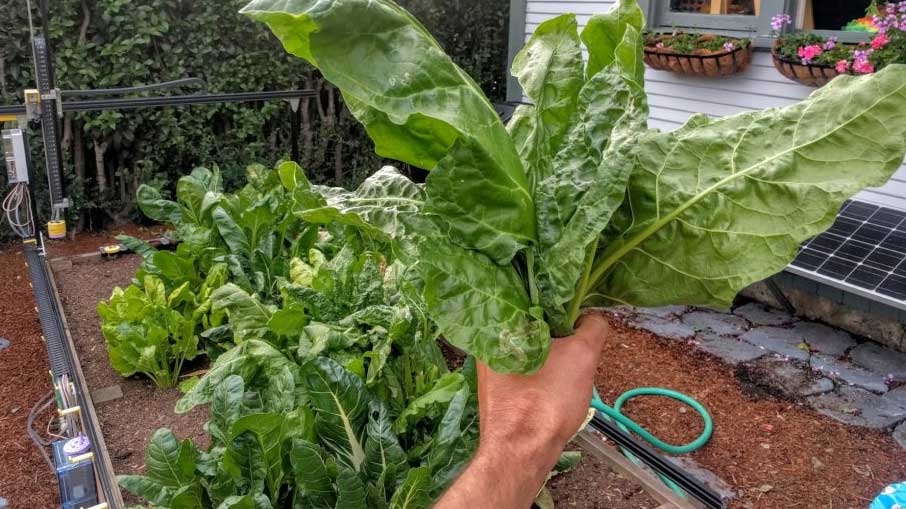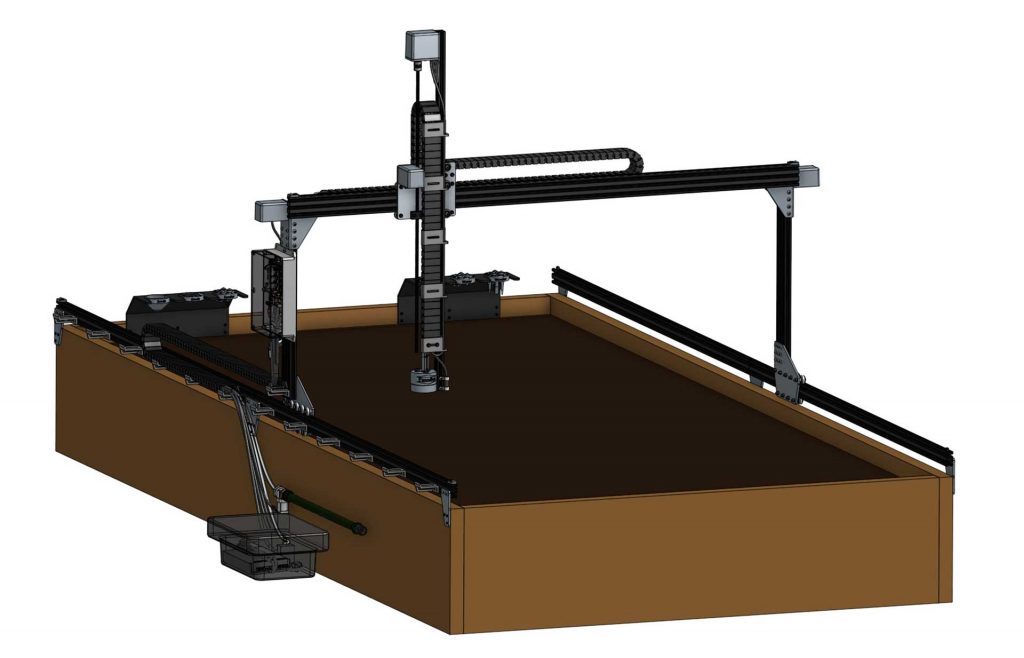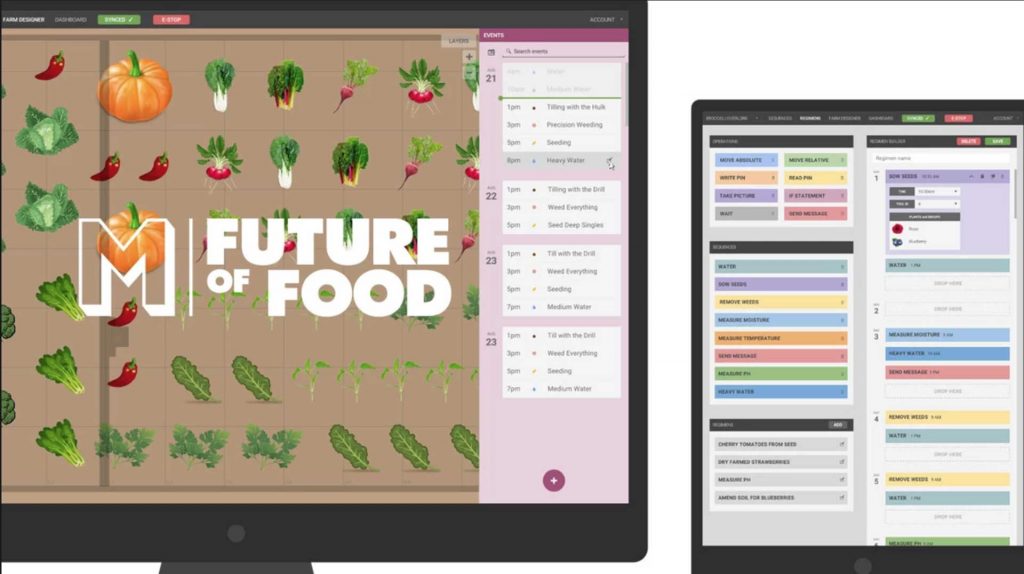FARMBOT 1.0
FarmBot Genesis is the first FarmBot to be designed, prototyped, and manufactured. Genesis is designed to be a flexible FarmBot foundation for experimentation, prototyping, and hacking. The driving factors behind the design are simplicity, manufacturability, scalability, and hackability.
Genesis is a small scale FarmBot primarily constructed from V-Slot aluminum extrusions and aluminum plates and brackets. Genesis is driven by NEMA 17 stepper motors, an Arduino MEGA with a RAMPS shield, and a Raspberry Pi 3 computer. These electronics were chosen for their great availability, support, and usage in the DIY 3D printer world. Genesis can vary in size from a planting area as little as 1m2 to a maximum of 4.5m2, while accommodating a maximum plant height of about 1m. With additional hardware and modifications we anticipate the Genesis concept to be able to scale to approximately 50m2and a maximum plant height of 1.5m.
Precision farming has been hailed as the future of agriculture, sustainability, and the food industry. That’s why a company called FarmBot is working to bring precision agriculture technology to environmentally conscious individuals for the first time. The first product — the FarmBot Genesis — is a do-it-yourself precision farming solution, that (theoretically) anyone can figure out. The system is already up to its ninth iteration, and the open source robot improves in each version thanks to input from the FarmBot community.
The FarmBot is designed to be customizable and accessible to the maker community. Its design is based on generic devices such as:
Agriculture is an expensive and wildly wasteful industry. The precision farming movement may not solve every problem the industry faces, but it does have a lot of potential to improve sustainability and efficiency. Before FarmBot, precision agriculture equipment was only available in the form of massive heavy machinery. Precision farming tractors used to cost more than $1 million each when FarmBot creator Rory Aronson first had the idea for his solution in 2011.
The FarmBot robot kit ships with an Arduino Mega 2560, Raspberry Pi 2 Model B, disassembled hardware packages and access to the open-source software community. FarmBot Genesis runs on custom built tracks and supporting infrastructure, all of which you need to assemble yourself. The online FarmBot community makes it easy to find step-by-step instructions for every single assembly process. There are even forums to troubleshoot installing a FarmBot in your own backyard. The robot relies on a software platform that users access through FarmBot’s web app, all of which looks a whole lot like Farmville, the infamous mobile game.
The physical FarmBot system is aligned with the crops you plot out in your virtual version on the web app. That’s how Farmbot can reliably dispense water, fertilizer, and other resources to keep plants healthy and thriving. Since it doesn’t require any delicate sensor technology, FarmBot is a cheaper solution than the industrial precision farming equipment on the market. And with its universal tool mount, you can adapt FarmBot to do pretty much any garden task you desire.
If you’re looking to build your own FarmBot, grab the build schematics and bill of materials (B0M)

















